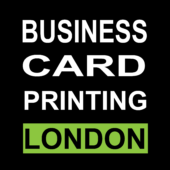Crafting the Perfect Business Card: A Comprehensive Guide
In the digital age, where networking often takes place online, the humble business card might seem like a relic of the past. However, it remains an invaluable tool for making a lasting impression in the business world. A well-designed business card can leave a memorable mark on potential clients, partners, and contacts. But what exactly should you include on your business card to make it stand out? Let’s delve into the essential elements that should grace your card.
1. Your Name and Title: The most crucial piece of information on your business card is your name. Ensure it’s prominently displayed and easy to read. Follow it up with your job title or position within your company. This helps recipients understand who you are and what you do at a glance.
2. Contact Information: Include all relevant contact details such as your phone number and email address. If applicable, you can also add your company’s website URL. Including multiple contact options ensures that potential clients can reach you through their preferred communication channel.
3. Company Logo and Branding: Incorporate your company’s logo and branding elements to reinforce brand recognition. Consistency in design across all marketing materials helps establish trust and professionalism.
4. Physical Address (Optional): While not always necessary, adding your office address can be beneficial if you have a physical location that clients may need to visit. However, if you primarily operate online or remotely, you can omit this detail.
5. Social Media Profiles (Optional): If you’re active on professional social media platforms such as LinkedIn or Twitter, consider including your profile handles. This allows recipients to connect with you on other channels and stay updated on your professional endeavors.
6. QR Code (Optional): Incorporating a QR code that directs recipients to your website or LinkedIn profile can provide an interactive element to your business card. It’s a convenient way for tech-savvy individuals to access more information about you and your services.
7. Tagline or Value Proposition: A concise tagline or value proposition can succinctly convey what sets you apart from the competition. Use this space to highlight your unique selling points and compel recipients to engage with you further.
8. White Space and Legibility: Ensure your business card design incorporates sufficient white space to avoid clutter. Use legible fonts and maintain a balanced layout to enhance readability. A clutter-free design allows recipients to focus on the essential information without feeling overwhelmed.
Conclusion: A well-crafted business card serves as a tangible representation of your professional identity and can leave a lasting impression on potential clients and contacts. By including essential details such as your name, contact information, company branding, and a compelling tagline, you can create a memorable card that effectively communicates your value proposition. Remember to keep the design clean and legible, and consider incorporating optional elements such as social media profiles or QR codes to add an extra layer of engagement. With the right balance of information and design, your business card can become a powerful tool for networking and building valuable connections in the business world.
